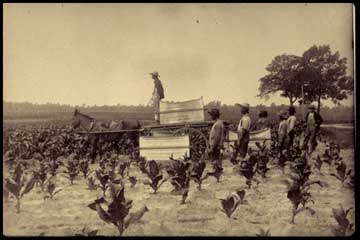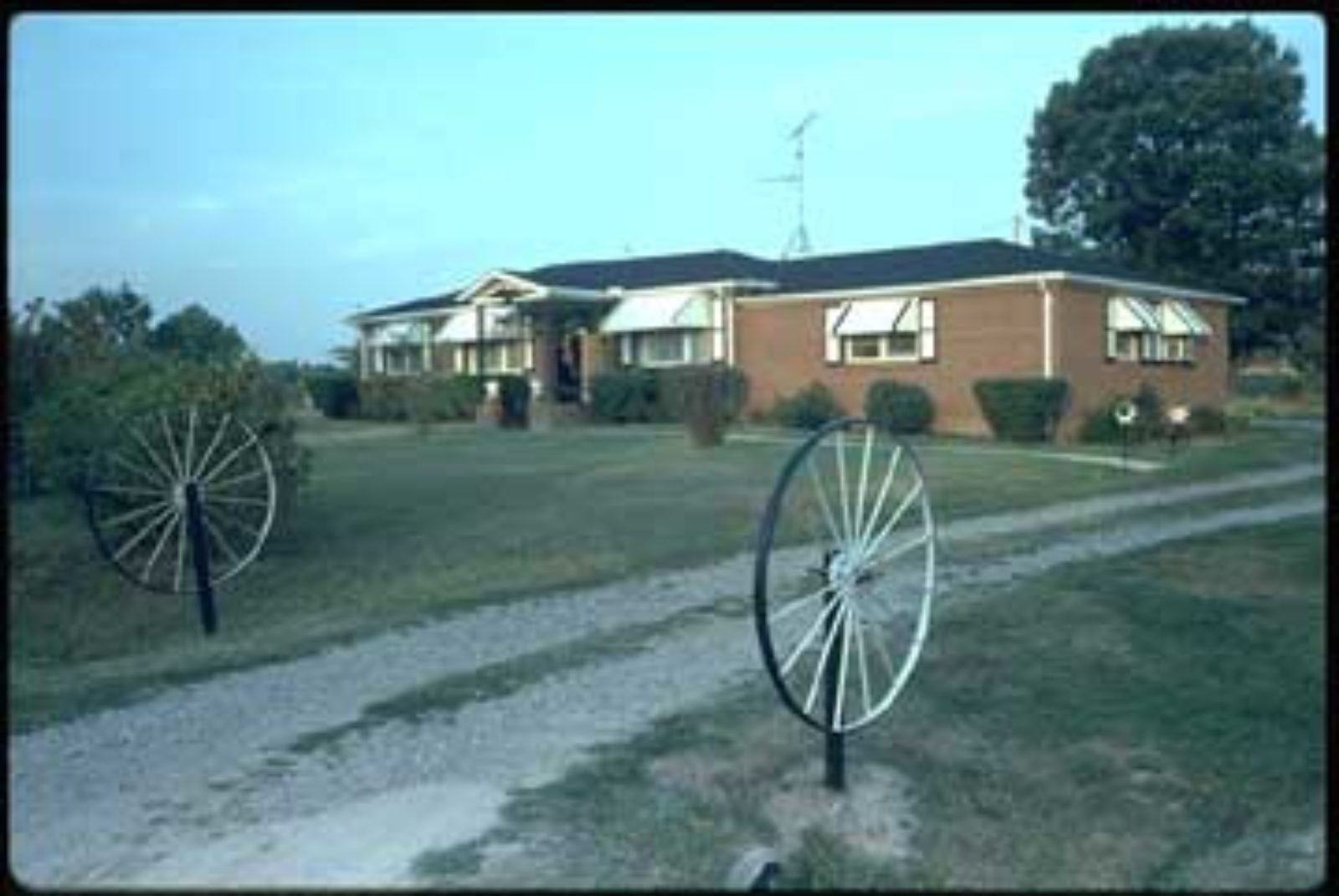Lay of the Land

Notes on Granville County, North Carolina
Lying at the eastern edge of the Carolina Piedmont, Granville County, North Carolina—home of the Landis family for several generations—has a long agricultural history in which the growing of tobacco has predominated. More recently, Granville has felt the influence of post-World War II economic development that has transformed the nearby Triangle area of Raleigh-Durham-Chapel Hill. Directly northeast of the city of Durham, the town of Creedmoor and the county of Granville sit alongside Interstate Highway 85, a busy route of commercial truck and automobile traffic that connects the Piedmont with the cities of the East Coast. Over the past four decades Granville's population has remained relatively constant (29,300 people in 1940, 34,000 in the 1980s), neither booming with the Triangle, nor suffering the marked declines and more pervasive poverty of many interior Coastal Plains counties to its east. The percentage of Granville County's population that is black has also remained relatively unchanged for many years, accounting in the 1980s for about 44% of the county's total. Granville's large black population percentage is a legacy of antebellum slavery in one of the South's leading tobacco producing counties. On land near the Tar River, tobacco and wheat were grown extensively in the first half of the nineteenth century and carried by wagon for sale in Virginia. In 1860 Granville was part of the tobacco belt tier of counties along the North Carolina-Virginia border in which the average number of slaves held per slaveholder was between ten and fifteen. Granville society was dominated by the planter class and the county was one of five counties in North Carolina containing more than ten thousand slaves. Considering the South as a whole, Granville's plantations were not so extensive nor its planters as wealthy as those in such regions as the Carolina Low Country, the Alabama Black Belt, or the Mississippi Delta. While Granville lay outside the Deep South's Cotton Kingdom, it also lay outside of the white yeoman farming culture centered in the Carolina Piedmont farther to the west and south. In addition to the growing of tobacco and wheat for market, Granville planters and farmers raised corn, oats, sweet potatoes, cattle, hogs, and sheep for domestic consumption. Tobacco, however, grown on the relatively rich and heavily fertilized sandy fields of Granville quickly became the county's major cash crop.

Tobacco Culture and Tenant Farming
For decades after the Civil War, tobacco remained the dominant crop in the county, providing wealth for a few large landholding families, lien merchants, and crop buyers, a precarious living for those farmers who owned their own land, and a life of hard labor and debt for tenants and sharecroppers. By the 1890s, Granville was producing an annual tobacco crop of five million pounds, much of it feeding the emerging snuff, plug, and cigarette of Durham. A booming national and international market for cigarettes was stirred into existence by James B. Duke's million-dollar advertising campaigns and with his introduction of the Bonsack cigarette machine.
Requiring some four hundred hours of intensive labor per acre throughout a "thirteen month" growing cycle, the cultivation and curing of tobacco demanded the attention of families of farmers, with jobs for young and old, male and female. "Tobacco culture," writes Delores Janiewski, "with its varied range of light and heavy, skilled and unskilled duties, was suited to the family labor system." As tenancy increased, however, "landlords assumed control over the family's labor resources."' Landowners divided and sub-divided their holdings into smaller and smaller tenant farms. Between 1880 and 1930, the average farm size in Granville County decreased from 136 acres to seventy-five. By 1930, nearly eighty percent of black farmers and fifty percent of white farmers did not own their farms. With the Depression decade, the prospects for a family farm livelihood grew worse. Even late into the twentieth century, adds Janiewski in her study of field and factory labor in Durham, Person, and Granville counties, "the workings of a white controlled system of credit, patronage, and political power operated to prevent blacks from gaining control over land, to detach black farmers from the land, and to retain white control over black labor." For every family like the Landises, who were able to obtain a Farm Security Administration loan to buy their farm, there were scores of families entrapped by the lien system or in flight from the countryside in search of "public work"—often in the Durham factories of the American Tobacco Company or Liggett and Myers.

New Opportunities in Public Work
Following World War II and the conversion of nearby Camp Butner into a complex of state facilities for North Carolina prisoners and mental patients, other possibilities for work appeared for Granville residents. Bertha Landis's son Claude, singer and songwriter with the Golden Echoes, began work at Butner in the early 1960s in a custodial janitorial job. After several years, he had become a children's health-care counselor. Other Landis family members also found work at Butner. With the building of I-85 and the location of a number of technology intensive industries along its route near Raleigh and Durham, Granville's black and white residents fared somewhat better than those in such former plantation counties to the east as Warren or Northampton where county population loss for the decade of the 1960s ranged between ten and fourteen percent. Most recently, the extended Landis family has felt the effects of manufacturing layoffs in older northern industrial areas and the arrival of retirement age. Several Landises who grew up on the family's Granville farm and then left the South seeking better living and working conditions have either moved or are considering making the move back near the homeplace.
